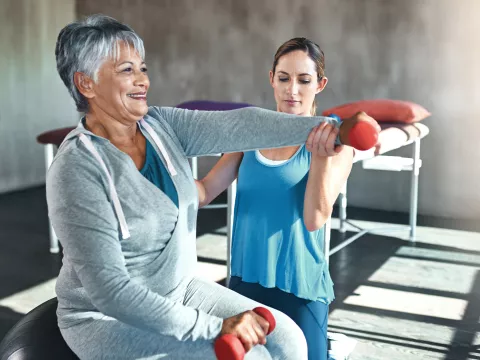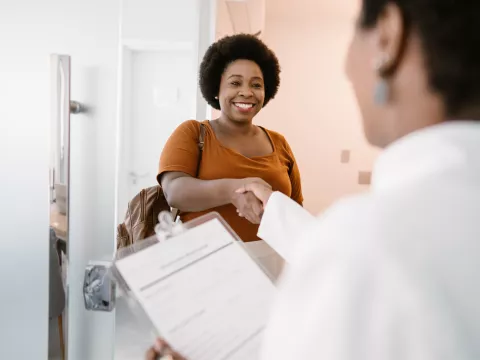- AdventHealth

Your bones are in a constant state of flux as they lose and gain cells to strengthen and protect your body. This process (called remodeling) repairs older bones with new bone material.
As you age, you can lose more bone cells than you add. This means weaker, less dense bones that put you at a higher risk for breaks. But the good news is that your doctor can get a glimpse into your bone health with a simple bone density (DXA) scan.
What Is a DXA Scan?
Dual-energy X-ray absorptiometry (DXA or DEXA) is the most accurate way to diagnose osteoporosis and assess your risk of developing fractures. This test is noninvasive and takes only 10 to 20 minutes.
The scan focuses on your lower spine and hip since people with osteoporosis have a greater risk of breaking these bones, and because the condition of these bones can also predict the likelihood of future bone breaks.
How Is Bone Density Calculated?
A radiologist will use the data from the exam to determine your risk for osteopenia (less severe bone loss) or osteoporosis. Each patient receives a:
- T score, which compares your bone mineral density to that of a healthy 30 year old of the same gender
- Z score, which shows the amount of bone you have compared with other people of your same age, size and gender
The lower your T- and Z-scores, the lower your bone density.
Doctors will also use other means for determining whether you have osteoporosis, including review of your medical history, a physical exam and lab work.
Who Should Have a Bone Density Scan?
The National Osteoporosis Foundation recommends bone scans for:
- Women or men who break a bone after age 50
- Women age 65 or older
- Women of menopausal or post-menopausal age with risk factors
- Men age 50-69 with risk factors or those 70 or older
Your doctor may also order a bone density test if you have:
- A break or bone loss in your spine
- Height loss of 1/2 inch or more in a year
- Total height loss of 1 1/2 inches from your original height
How Can I Strengthen My Bones?
Girls reach about 90 percent of peak bone mass by the time they’re age 19. For boys, it’s age 20. So, it’s important to note that you can best keep your bones healthy by starting young. But no matter your age, you can increase your bone strength by taking these steps:
Add Weight-Bearing and Resistance Exercises to Your Workout
Weight-bearing exercises — which include walking, hiking, jogging, climbing stairs, playing tennis and dancing– cam stimulate cell growth in your bones. And resistance exercises – such as lifting weights – can further strengthen them.
Both types of activities also build muscle. Strong muscles support your bones more effectively and help reduce your risk of falls.
Concentrate on Calcium
The body absorbs calcium from foods or supplements. Sources of calcium include dairy products, salmon, dark leafy greens, beans and soy foods.
Women age 19 to 50 need about 1,000 milligrams of calcium per day. Women over 50 should aim for 1,200 milligrams a day.
Men under age 71 need 1,000 mg of calcium every day, while men 71 and older need a total of 1,200 mg daily.
Cut Back on Caffeine and Salt
Caffeine and salt both cause your body to lose calcium more rapidly, and can contribute to bone loss over time.
Eat Your Veggies
Dark leafy greens — such as collards, kale, spinach and bok choy — are sources of calcium, magnesium, potassium and vitamin K.
Get Enough Vitamin D
Vitamin D is essential because it absorbs calcium. Sources of vitamin D include the sun and certain foods, such as fatty fish, beef liver, egg and fortified foods.
Stop Smoking
Smoking causes you to produce excess proteins that contribute to bone loss.
Work Closely With Your Primary Care Physician
It’s always best to see your primary care physician regularly (once per year at the very least) to personalize a health plan for your unique needs. Working together, you can develop strategies for improving your whole health, discuss any health changes and stay on stop of important screenings and vaccinations (like a DXA scan) when it’s time.
Learn more about AdventHealth imaging locations in your area.




